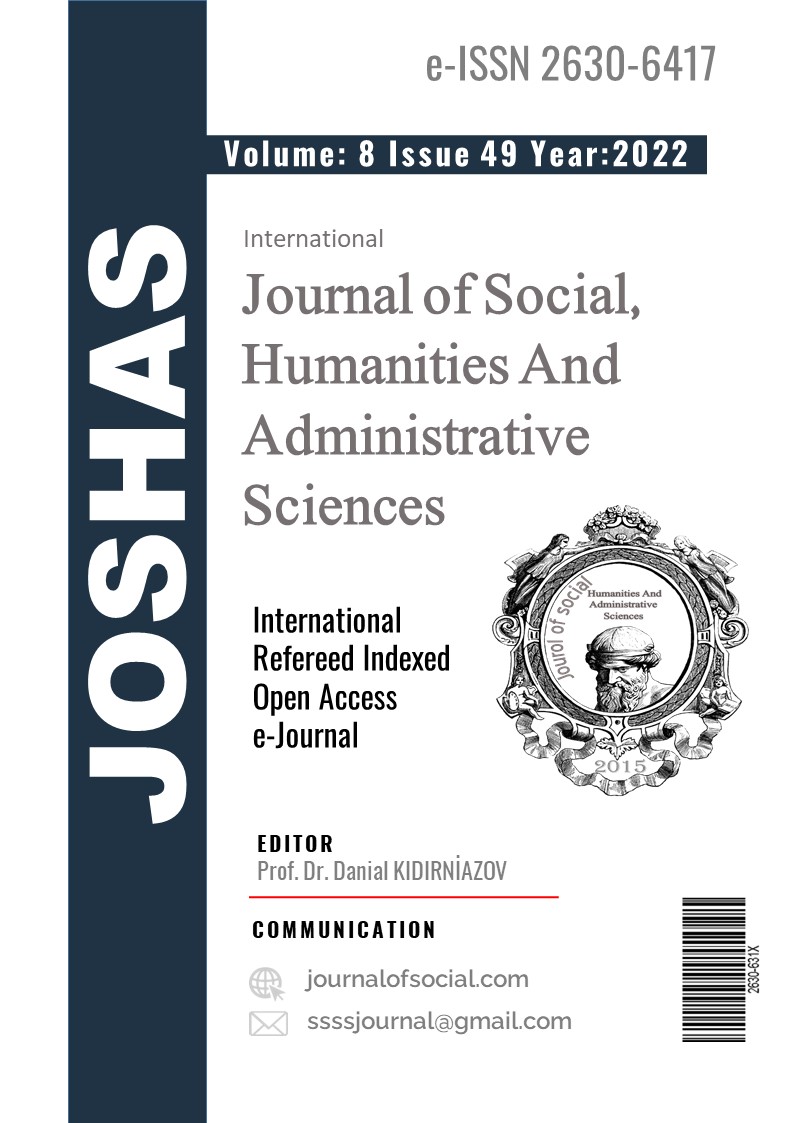Author :
Abstract
Bu çalışma, mimarlık alanındaki sermaye meselesine odaklanarak spesifik olarak simgesel sermaye türünü incelemektedir. Bu inceleme boyunca –mimar, sermaye ve iktidar arasındaki ilişkinin boyutları hususunda- simgesel sermaye kavramı Pierre Bourdieu’nun teorisine referansla tartışılmaktadır. Güncel mimarlık pratiğinin sayısız aktörünün olduğu bir alanda sahip olunan sermaye türünün önemi bilinmektedir. Ekonomik, sosyal, kültürel sermayenin öneminin yanı sıra bu sermayelerin tümünün biraraya gelerek oluşturduğu simgesel sermaye mimarlar için ayrıca önem taşımaktadır. Mimarlık pratiğinde iktidarın oluşumu ve sermaye türleri arasında doğru orantı olduğu argümanından yola çıkan bu çalışma, özellikle simgesel sermayeye sahip mimarların alanda egemen ve etkin olduklarını göstermeyi amaçlamaktadır. Bu nedenle çalışmanın kapsamını, mevcut nitelikleriyle simgesel sermaye sahibi olan mimarlar oluşturmuştur. Türkiye mimarlık ortamındaki bu mimarların simgesel sermayeye sahip oldukları; aile geçmişleri, aldıkları eğitim, aldıkları işlerin niteliği, çalışma ortamları ve işverenlerinin statüleriyle birlikte doğrulanmaya çalışılmıştır. Tüm bu araştırmalar sonucunda, mimarlık ortamında iktidar gücü ve simgesel sermaye arasında anlamlı bir bağlantı olduğu görülmüştür. Bu bağlamda, mimarlar arasında gün geçtikçe derinleşen sınıfsal konum problemlerinin önemli bir parçasının sermaye kavramı ile ilgili olduğu söylenebilmektedir.
Keywords
Abstract
This study specifically examines the type of symbolic capital by focusing on the issue of capital in the architectural environment. Throughout this examination, the concept of symbolic capital is discussed with reference to the theory of Pierre Bourdieu, in order to examine the dimensions of the relationship between architect-capital-power. The importance of the type of capital owned in an area where there are numerous actors of contemporary architectural practice is known. In addition to the importance of economic, social and cultural capital, the symbolic capital created by all of these capitals is also important for architects. Based from the argument that there is a direct proportion between the provision of power and the types of capital in architectural practice, this study aims to show that architects with symbolic capital are dominant and effective in the field. For this reason, the scope of the study consists of architects who have symbolic capital with their current qualifications. It has been tried to verify that these architects have symbolic capital, together with their family backgrounds, the education they received, the quality of the work they received, their working environment and the status of their employers. As a result of all these researches, it has been seen that there is a significant connection between power and symbolic capital in the architecture. In this context, it can be said that an important part of the class position problems among architects, which are getting deeper day by day, is related to the concept of capital.
Keywords
- Artun, A. (2012). Mimarın Şöhret Düşkünlüğü - Emre Arolat ve Guy Debord, eskop.com [erişim tarihi: 22.12.2021].
- Artun, A. (2012). Mimarın Şöhret Düşkünlüğü - Emre Arolat ve Guy Debord, eskop.com [erişim tarihi: 22.12.2021].Bayhan, B. (2019). “Simgesel Sermaye Olarak Tasarım: Mimarlık Alanında Süreçler, Aktörler, İlişkiler”,Yayımlanmamış Yüksek Lisans Tezi, Mimar Sinan Güzel Sanatlar Üniversitesi Sosyal Bilimler Enstitüsü, İstanbul.Bourdieu, P. (1983). “Ökonomisches Kapital, Kulturelles Kapital, Soziales Kapital”, Hrsg: Kreckel, Reinhard, Soziale Ungleichheit, Soziale Welt, Sonderband 2. Göttingen.
- Bourdieu, P. (2013). Bilimin Toplumsal Kullanımları: Bilimsel Alanın Klinik Bir Sosyolojisi İçin, (L. Ünsaldı, Çev.), Heretik Yayıncılık, Ankara.
- Bourdieu, P. (2015), Ayrım, (Çev. Derya Fırat ve Günce Berkkurt), Heretik Yayınları, Ankara.
- Braun, Sebastian. (2002). “Soziales Kapital, Sozialer Zusammenhalt Und Soziale Ungleichheit”, Aus Politik Und Zeitgeschichte.
- Calhoun, C. (2014). Bourdie Sosyolojisinin Ana Hatları, Güney Çeğin vd. (Der.), Ocak ve Zanaat: Pierre Bourdieu Derlemesi, 1. Baskı içinde (77-129), İletişim Yayınları, İstanbul.
- Dovey, K. (1999). Framing Places Mediating Power in Built Form, Routledge, London.
- Field, J. (2008). Sosyal Sermaye, 2.Baskı, İstanbul Bilgi Üniversitesi Yayınları, İstanbul. Gorski, P.S. (2015). Bourdieu ve Tarihsel Analiz, Heretik Yayıncılık, İstanbul.
- Hüseyin, Z. (2015). “Mimarın İktidarına Eleştirel Bakmak”, Yayımlanmamış Yüksek Lisans Tezi, İstanbul Teknik Üniversitesi,Fen Bilimleri Enstitüsü, İstanbul.
- Kaplan, M., Yardımcıoğlu, M. (2020). “Alan, Habıtus ve Sermaye Kavramlarıyla Pıerre Bourdıeu”, Habitus Toplumbilim Dergisi, (1): 23-37.
- Kaya, A. (2016). Pierre Bourdieu'nün Pratik Kuramının Kilidi: Alan Kavramı, Ocak ve Zanaat içinde, (Ed.) Güney Çeğin, Emrah Göker, Ali Marlı, Ümit Tatlıcan, İletişim Yayınları, İstanbul.
- Köse, H. (2004). Bourdieu Medyaya Karşı, Papirüs Yayınevi, İstanbul.
- Swartz, D. (2011). Kültür ve İktidar: Pierre Bourdieu'nün Sosyolojisi. (E. Gen, Çev). İletişim Yayınları, İstanbul. Swartz, D. (2018). Kültür ve İktidar (E. Gen, Çev.). İstanbul: İletişim Yayınları.
- Timur, T. (2006). Marksizm, İnsan ve Toplum Balibar, Seve, Althusser, Bourdieu, Yordam Kitap, İstanbul.
- Ölçer, H. (2019). “Pierre Bourdieu Sosyolojisinde Simgesel Şiddet Sorunsalı ve Biçimleri”, Nosyon: Uluslararası Toplum ve Kültür Çalışmaları Dergisi, 1(2): 34-49.
- Wacquant, L., Bourdieu P. (2016). Düşünümsel Bir Antropoloji İçin Cevaplar, İletişim Yayınları, İstanbul.
- Yılmaz C. (2020). Bourdieu’s Fundamental Concepts and Analysis of Symbolic Violence, HABITUS Journal of Sociology, (1)1: 161-179.
- URL1. https://tr.wikipedia.org/wiki/Balyan_ailesi [Erişim tarihi: 12.10.2021].
- URL2. https://www.arkiv.com.tr/mimar/emre-arolat/372 [Erişim tarihi: 22.09.2021].
- URL3. https://www.arkiv.com.tr/proje/prag-buyukelciligi-/2653 [Erişim tarihi: 22.09.2021].URL4. https://www.arkiv.com.tr/proje/sancaklar-camisi/2049 [Erişim tarihi: 22.09.2021].URL5. https://www.arkiv.com.tr/proje/kuzu-effect/11967 [Erişim tarihi: 22.09.2021].
- URL6. http://www.arkiv.com.tr/mimar/murat-tabanlioglu/1079 [Erişim tarihi: 02.10.2021].
- URL7. http://www.arkiv.com.tr/proje/dogan-medya-merkezi/1431 [Erişim tarihi: 04.10.2021]. URL8. http://www.arkiv.com.tr/proje/levent-kanyon/1771 [Erişim tarihi: 04.10.2021].
- URL9. https://www.arkiv.com.tr/mimar/can-cinici/6400 [Erişim tarihi: 18.11.2021]
- URL10. http://www.arkiv.com.tr/proje/tbmm-camisi/1815 [Erişim tarihi: 18.11.2021].URL11. http://www.arkiv.com.tr/mimar/tulin-hadi/176 [Erişim tarihi: 18.11.2021]
- URL12. http://www.arkiv.com.tr/proje/basf-inovasyon-merkezi/11570[Erişim tarihi: 19.11.2021]
- URL13.http://www.arkiv.com.tr/proje/hilton-garden-inn-istanbul-golden-horn/609 [Erişim tarihi: 19.11.2021]URL14. http://www.arkiv.com.tr/proje/akbank-akademi-yasam-merkezi/11231 [Erişim tarihi: 19.11.2021] URL15. http://www.arkiv.com.tr/proje/siemens-sosyal-tesisi1/2867 [Erişim tarihi: 19.11.2021]





